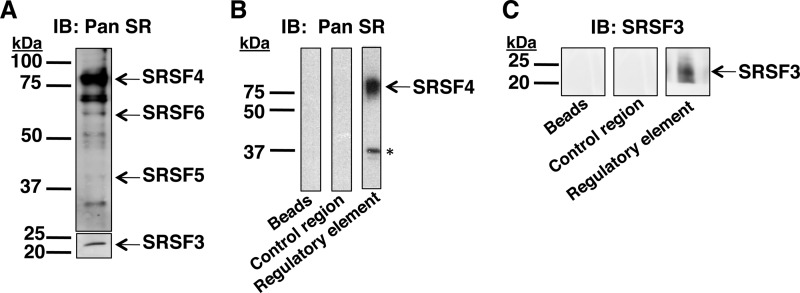FIGURE 3.
SRSF3 and SRSF4 bind to the splicing regulatory element. An RNA affinity assay was performed using liver nuclear extracts (250 μg of protein) and RNA oligonucleotide-bead complexes representing the regulatory element (nucleotides 43–72 of exon 12 of G6PD), a control region (nucleotides 79–93 of exon 12 of G6PD), or with the beads alone as a control for nonspecific binding to the beads. A, the nuclear extracts used in the affinity assay were analyzed by Western analysis with an antibody (16H3, Pan SR) that detects most SR proteins independent of phosphorylation state. Because of its lower abundance in liver nuclear extracts, SRSF3 was detected in a second blot using more nuclear protein. B and C, proteins eluted from the bead/oligonucleotide complexes were detected by Western analysis using the Pan SR antibody (B) or an antibody against SRSF3 (C). The protein marker (kDa) is indicated to the left of each set of gels. The asterisk indicates a nonspecific band that was not detected when the blot was reprobed with the phosphorylated SR protein-specific antibody (1H4; not shown). Each RNA affinity assay is a representative of three experiments performed using two independent nuclear extract preparations; all experiments showed the same results. IB, immunoblot.

